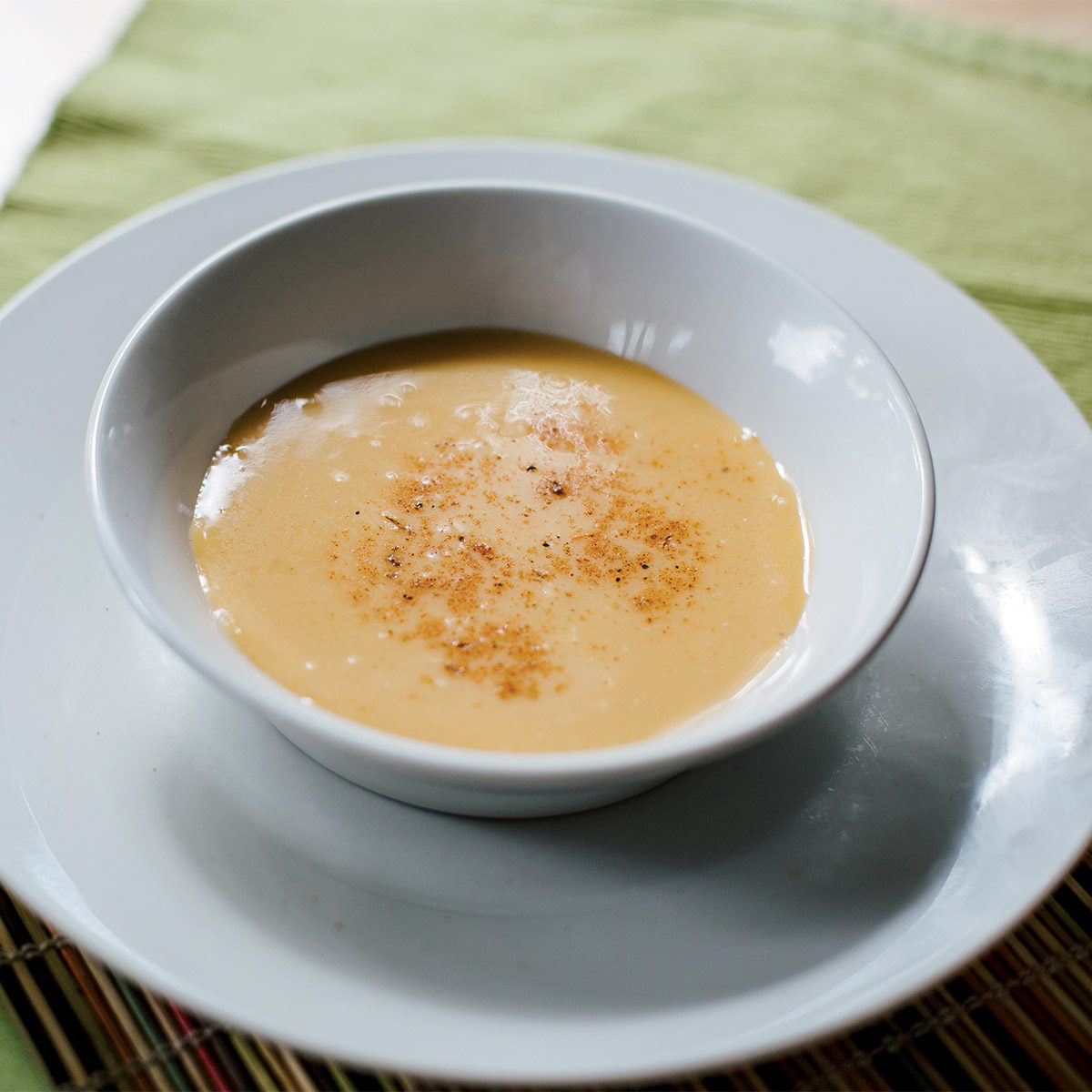Squash is a fun, versatile piece of produce with several exciting varieties from which to choose!
Because of its many types, squash has the ability to transform into an array of delicious dishes. Everything from bright yellow summer squash to pale orange butternut squash is part of this gourd-based family of fruiting plants.
Dish T'Pass Butternut Bisque
8
servings45
minutesThis rich and delicious vegan soup is a perfect welcome to fall. Light and flavorful coconut milk replaces the traditional bisque ingredient of heavy cream. Make a double batch and freeze some for later or gift it to a neighbor or co-worker. Bonus! This dish pairs nicely with an arugula salad made with dried cranberries, toasted walnuts, shaved parmesan, and a balsamic vinaigrette.
Ingredients
- 1
large butternut squash, about 3 lbs.
- 1
medium yellow onion
- 3 cups
vegetable broth
- 1 tsp.
salt
- ½ tsp.
white ground pepper
- 1 tsp.
Alchemy's Voodoo Powder or other blackening seasonings blend
- 1
can lite coconut milk
Directions
Peel and cut squash into chunks.
Peel and dice onion into large pieces.
In a soup pot, heat broth, spices, squash, and onion over medium high heat. Bring to a boil, then turn down heat to simmer for 15 minutes.
Simmer until squash is tender and almost falling apart.
Use an immersion blender to purée soup until completely smooth. Add coconut milk. Heat through.
Adjust seasonings. Serve.
Facts about Squash
Did You Know?
Squash is technically a fruit, because it has seeds. But it is treated as a vegetable in culinary uses due to its savory profile.
Storing Wisdom:
Fall squash can actually be stored for months if properly cured. Keep cured squash in a cool, dark place in your home, such as a pantry shelf or kitchen drawer, throughout the winter months. Check them for soft spots periodically. If any appear, it’s best to use that fruit right away.
Curing:
The process of allowing squash a sunny, well-circulated space to dry for about 10 days before storing. This rids the fruit of excess water.
How to Choose:
For cool weather squash such as acorn, butternut, and kabocha (similar to a pumpkin), you should select a fruit that feels heavy for its size, and whose skin is firm and unbruised.


